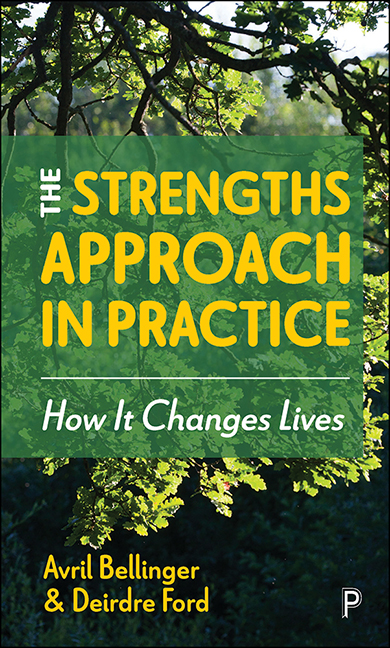Book contents
- Frontmatter
- Dedication
- Contents
- List of figures, tables and boxes
- About the authors
- Acknowledgements
- Preface
- Introduction: The strengths approach in a global emergency
- 1 A strengths approach to human need
- 2 A strengths approach to law and policy
- 3 A strengths approach to organisational development
- 4 A strengths approach to governance and management
- 5 A strengths approach to funding an NGO
- 6 A strengths approach to research
- 7 A strengths approach to student learning
- 8 A strengths approach to growing community
- 9 The strengths approach in practice: how it changes lives
- References
- Index
8 - A strengths approach to growing community
Published online by Cambridge University Press: 15 September 2022
- Frontmatter
- Dedication
- Contents
- List of figures, tables and boxes
- About the authors
- Acknowledgements
- Preface
- Introduction: The strengths approach in a global emergency
- 1 A strengths approach to human need
- 2 A strengths approach to law and policy
- 3 A strengths approach to organisational development
- 4 A strengths approach to governance and management
- 5 A strengths approach to funding an NGO
- 6 A strengths approach to research
- 7 A strengths approach to student learning
- 8 A strengths approach to growing community
- 9 The strengths approach in practice: how it changes lives
- References
- Index
Summary
If you are coming to help me, you are wasting your time. But if you are coming because your liberation is bound with mine, then let us work together.
Aboriginal activists’ group Queensland, 1970sRefugees are people who have been forcibly displaced because of war or persecution and have arrived in a strange land. Imagine you have had to flee for your life. You have left everything you know – friends, family, familiar sounds, sights, smells, objects and everyday activities. You have undergone numerous challenges to reach a place of safety and have been met with suspicion, disbelief and hostility when you arrived (Halpern and Sloan, 2020). You do not need to be treated as a charity case, deprived of your dignity or shamed by the expectation that you should be grateful.
This chapter is about growing community and protecting conditions in which community as a practice can thrive. The concepts that inform this chapter are ‘community’, ‘the commons’ and ‘reciprocity’. Examples follow, from the experience at START and elsewhere, of activities that can facilitate community growth with a particular focus on the way they are informed by a strengths approach. We believe they have wider application. They are offered as a stimulus rather than a recipe!
What is a strengths approach to community?
The literature surrounding community work refers to different models of community relating to:
• profession (Goode, 1957)
• geographical location (Phillips and Pittman, 2014)
• ethnic or cultural allegiance (Breton, 1964)
• interest or practice (Wenger, 1998; Bradshaw, 2008)
• wider society in general, including both human and nonhuman elements (Dorow and O’Shaughnessy, 2013)
The term community remains contested with much of the literature about community work assuming a geographic definition (Stepney and Popple, 2012). A current and popular model of working with community strengths rather than deficits originates in the US with the work of Kretzmann and McKnight (1993; McKnight and Kretzmann, 1996). In a move away from a conflict orientation, they propose a system called ‘asset-based community development’ (ABCD) that seeks out the strengths and ‘assets’ of communities in order to affirm, connect and build on them. In affirmation of this more positive paradigm, Mathie and Cunningham describe ABCD as ‘an approach, as a set of methods for community mobilization, and as a strategy for community-based development’ (2003: 6).
- Type
- Chapter
- Information
- The Strengths Approach in PracticeHow It Changes Lives, pp. 169 - 189Publisher: Bristol University PressPrint publication year: 2022



